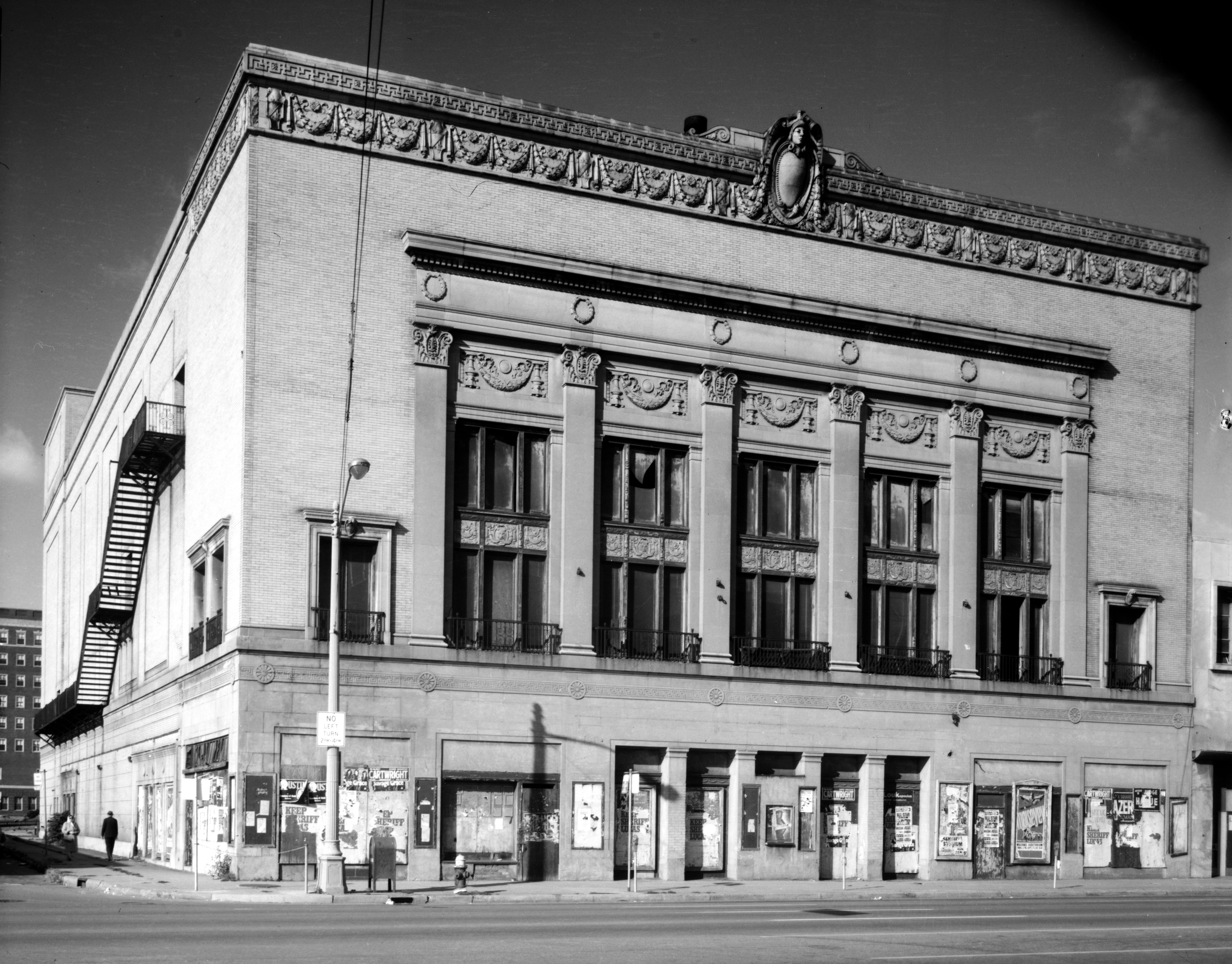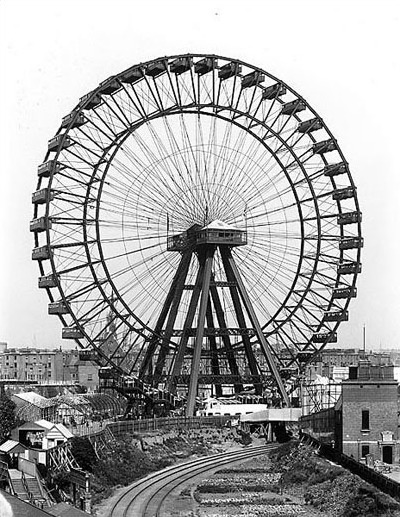|
Howard Crane
Charles Howard Crane (August 13, 1885 – August 14, 1952) was an American architect who was primarily active in Detroit, Michigan. His designs include Detroit's Fox Theatre and Olympia Stadium, as well as LeVeque Tower in Columbus, Ohio, which remains that city's second tallest building. Biography Born in Hartford, Connecticut, Crane moved to Detroit in 1904. pp. 345–346. He worked as a draftsman for several architectural firms, including Albert Kahn Associates, Smith, Hinchman & Grylls, and the office of Gustave A. Mueller, before opening his own office in 1908.DiChiera, Lisa Maria (1992)''The Theater Designs of C. Howard Crane''(Masters Thesis). University of Pennsylvania. pp. 9–11. Like Thomas W. Lamb and John Eberson, Crane specialized in the design of movie palaces in North America.Sullivan, TarynC. Howard Crane ''Historic Detroit''. Retrieved on November 9, 2013. Crane's career would include some 250 theaters in total, with 62 of them in the Detroit area. His 51 ... [...More Info...] [...Related Items...] OR: [Wikipedia] [Google] [Baidu] |
Hartford, Connecticut
Hartford is the capital city of the U.S. state of Connecticut. It was the seat of Hartford County until Connecticut disbanded county government in 1960. It is the core city in the Greater Hartford metropolitan area. Census estimates since the 2010 United States census have indicated that Hartford is the fourth-largest city in Connecticut with a 2020 population of 121,054, behind the coastal cities of Bridgeport, New Haven, and Stamford. Hartford was founded in 1635 and is among the oldest cities in the United States. It is home to the country's oldest public art museum (Wadsworth Atheneum), the oldest publicly funded park (Bushnell Park), the oldest continuously published newspaper (the ''Hartford Courant''), and the second-oldest secondary school (Hartford Public High School). It is also home to the Mark Twain House, where the author wrote his most famous works and raised his family, among other historically significant sites. Mark Twain wrote in 1868, "Of all the beautifu ... [...More Info...] [...Related Items...] OR: [Wikipedia] [Google] [Baidu] |
John Eberson
John Adolph Emil Eberson (January 2, 1875 – March 5, 1954) was an Austrian-American architect best known for the development and promotion of movie palace designs in the atmospheric theatre style. He designed over 500 theatres in his lifetime, earning the nickname "Opera House John". His most notable surviving theatres in the United States include the Tampa Theatre (1926), Palace Theatre (1928), Majestic Theatre (1929), Akron Civic Theatre (1929) and Paramount Theatre (1929). Remaining international examples in the atmospheric style include both the Capitol Theatre (1928) and State Theatre (1929) in Sydney, Australia, The Forum (1929, Melbourne, Australia) and Le Grand Rex (1932, Paris, France). Life and career John Adolf Emil Eberson was born in Czernowitz, Bukovina, Austria-Hungary, now south western Ukraine, on January 2, 1875. He was the son of Sigfried and Lora (Schmidt) Eberson. He attended high school in Dresden, Saxony and studied electrical engineering at the Unive ... [...More Info...] [...Related Items...] OR: [Wikipedia] [Google] [Baidu] |
Macomb Music Theatre
The Emerald Theatre is a live multi-use entertainment and concert venue located in downtown Mt. Clemens, Michigan. The venue The 23,000 square foot venue contains a theater with a general admission capacity of 1,640 on three levels, with cabaret-style terraced seating and a dance floor that both convert to theater-style seating. The mezzanine level contains permanent theater seating and a standing room third floor grand balcony. The venue hosts a variety of local and national concert, comedy, corporate, weddings and entertainment events. History Opened in 1921 as a grand movie palace and vaudeville live performance venue, the theater was known as the Macomb Theatre until 1987, when it went through a series of name, use and ownership changes. The theatre was designed by noted theater architect, C. Howard Crane, who also designed Detroit's Orchestra Hall and Fox Theatre. One of the first grand movie palaces in the metropolitan Detroit area, the historic theater is the larges ... [...More Info...] [...Related Items...] OR: [Wikipedia] [Google] [Baidu] |
Walkerville, Ontario
Walkerville, Ontario, is a former town in Canada, that is today a heritage precinct of Windsor, Ontario. The town was founded by Hiram Walker in 1890, owner and producer of Canadian Club Whisky. Walker planned it as a 'model town’, (originally called 'Walker's Town'), that would be the envy of both the region and the continent. He established a distillery on the Detroit River and grew his business by growing grain, milling flour, and raising cattle and hogs. Later, the town supported other major industries, notably automotive manufacturing. It was annexed to Windsor, July 1, 1935. Architecture Walker established homes for his workers, a church dedicated to his late wife, and a school. The town, which developed outward from the distillery, included buildings designed by Albert Kahn, notably Willistead Manor, the home of Walker's second son, Edward Chandler Walker. Upon Walkerville’s eventual amalgamation with Windsor, the Manor became heritage-protected property of the city ... [...More Info...] [...Related Items...] OR: [Wikipedia] [Google] [Baidu] |
Orchestra Hall (Detroit)
Orchestra Hall is an elaborate concert hall in the United States, located at 3711 Woodward Avenue in Midtown Detroit, Michigan. The hall is renowned for its superior acoustic properties and serves as the home of the internationally known Detroit Symphony Orchestra (DSO), the fourth oldest orchestra in the United States. With the creation of an adjoining auditorium for jazz and chamber music in 2003, Orchestra Hall became part of the Max M. and Marjorie S. Fisher Music Center. It was listed on the National Register of Historic Places in 1971. History The Detroit Symphony Orchestra had previously played at the old Detroit Opera House. However, Ossip Gabrilowitsch demanded that the DSO build a suitable auditorium before he assumed his position as music director. Construction on Orchestra Hall began on June 6, 1919, and was completed in barely six months. The 2,014-seat hall was designed by the noted theater architect, C. Howard Crane. The first concert took place on October 23, ... [...More Info...] [...Related Items...] OR: [Wikipedia] [Google] [Baidu] |
Youngstown, Ohio
Youngstown is a city in the U.S. state of Ohio, and the largest city and county seat of Mahoning County, Ohio, Mahoning County. At the 2020 United States census, 2020 census, Youngstown had a city population of 60,068. It is a principal city of the Mahoning Valley, Youngstown–Warren metropolitan area, which had a population of 541,243 in 2020, making it the List of metropolitan statistical areas, 107th-largest metropolitan area in the United States and Ohio statistical areas, seventh-largest metro area in Ohio. Youngstown is situated on the Mahoning River, southeast of Cleveland and northwest of Pittsburgh. In addition to having its own media market, Youngstown is also part of the larger Northeast Ohio region. Youngstown is midway between Chicago and New York City via Interstate 80. The city was named for John Young (pioneer), John Young, an early settler from Whitestown, New York, who established the community's first sawmill and gristmill. Youngstown is a midwestern city, ... [...More Info...] [...Related Items...] OR: [Wikipedia] [Google] [Baidu] |
Liberty/Paramount Theatre
The Liberty/Paramount Theatre was an early movie palace located on West Federal Street and Hazel Avenue in Youngstown, Ohio. Designed by Detroit architect C. Howard Crane, the theatre opened as the Liberty Theatre on February 11, 1918. The auditorium originally seated 1700 patrons. The exterior has extensive terra cotta ornamentation, with swags and pilasters. The exterior is an example of the late Neo-classical style popularized by the Ecole des Beaux Arts. The theatre opened as a vaudeville house, and the original operators were C.W. Diebel Associates. In 1922 the McCrory Group acquired 60% of the stock for $209,000. In 1929 Paramount Pictures Corporation purchased the theatre and renamed it the Paramount Theatre. The company spent $200,000 modernizing the building and installing a sound system so the theatre could present the popular new ''talkies''. In 1933 Paramount Pictures went into receivership, but movies by then became the staple of entertainment for the American pub ... [...More Info...] [...Related Items...] OR: [Wikipedia] [Google] [Baidu] |
Majestic Theater (Detroit, Michigan)
The Majestic Theatre is a theatre located at 4126-4140 Woodward Avenue in Midtown Detroit, Michigan. It was listed on the National Register of Historic Places in 2008. Today, the theatre is mainly a music venue. It hosts a variety of musical concerts in three separate areas of the building: The Majestic, The Majestic Cafe, and The Magic Stick. History The Majestic Theatre, designed by C. Howard Crane, opened on April 1, 1915."Seven Michigan Properties Added to the National Register of Historic Places," press release, Michigan Department of History, Arts and Libraries (HAL), Aug. 7, 2008 The theatre originally seated 1,651 people (at the time the largest theatre in the world built for the purpose of showing movies [...More Info...] [...Related Items...] OR: [Wikipedia] [Google] [Baidu] |
Detroit
Detroit ( , ; , ) is the largest city in the U.S. state of Michigan. It is also the largest U.S. city on the United States–Canada border, and the seat of government of Wayne County. The City of Detroit had a population of 639,111 at the 2020 census, making it the 27th-most populous city in the United States. The metropolitan area, known as Metro Detroit, is home to 4.3 million people, making it the second-largest in the Midwest after the Chicago metropolitan area, and the 14th-largest in the United States. Regarded as a major cultural center, Detroit is known for its contributions to music, art, architecture and design, in addition to its historical automotive background. ''Time'' named Detroit as one of the fifty World's Greatest Places of 2022 to explore. Detroit is a major port on the Detroit River, one of the four major straits that connect the Great Lakes system to the Saint Lawrence Seaway. The City of Detroit anchors the second-largest regional economy in t ... [...More Info...] [...Related Items...] OR: [Wikipedia] [Google] [Baidu] |
World War II
World War II or the Second World War, often abbreviated as WWII or WW2, was a world war that lasted from 1939 to 1945. It involved the vast majority of the world's countries—including all of the great powers—forming two opposing military alliances: the Allies and the Axis powers. World War II was a total war that directly involved more than 100 million personnel from more than 30 countries. The major participants in the war threw their entire economic, industrial, and scientific capabilities behind the war effort, blurring the distinction between civilian and military resources. Aircraft played a major role in the conflict, enabling the strategic bombing of population centres and deploying the only two nuclear weapons ever used in war. World War II was by far the deadliest conflict in human history; it resulted in 70 to 85 million fatalities, mostly among civilians. Tens of millions died due to genocides (including the Holocaust), starvation, ma ... [...More Info...] [...Related Items...] OR: [Wikipedia] [Google] [Baidu] |
Earls Court Exhibition Centre
Earls Court Exhibition Centre was a major international exhibition and events venue just west of central London. At its peak it is said to have generated a £2 billion turnover for the economy. It replaced exhibition and entertainment grounds, originally opened in 1887, with an art moderne structure built between 1935 and 1937 by specialist American architect C. Howard Crane. With the active support of London mayor Boris Johnson, in an attempt to create Europe's "largest regeneration scheme", its proposed heritage listing was refused after it was acquired by developers, who promptly in 2008 applied for and were granted a Certificate of Immunity from Listing by English Heritage, and its demolition was completed in 2017. Located in Earl's Court but straddling the boundary between the Royal Borough of Kensington and Chelsea and the Borough of Hammersmith and Fulham, it was the largest such venue within the capital served by two London Underground stations—one of them, Earl's ... [...More Info...] [...Related Items...] OR: [Wikipedia] [Google] [Baidu] |







